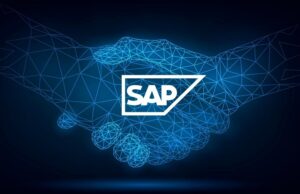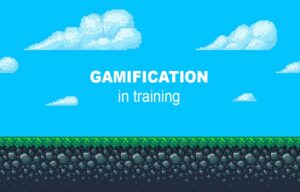Unlocking Digital Transformation in Asset Finance: Embracing Change for a Future-Ready Industry
5 min read
The asset finance landscape is undergoing a profound and disruptive transformation. As technology evolves at an unprecedented pace, businesses must ask themselves a crucial question: Is what brought us here sufficient to propel us into the future? Are we prepared to embrace digital transformation, or are we held back by the weight of legacy processes and thinking?
In the world of asset finance, where traditional practices have long been the bedrock of operations, the need for change is undeniable. Business as usual, once a reliable recipe for success, is no longer sufficient. Financial institutions must confront the reality that the strategies and mindsets that served them well for decades may now be insufficient in an era of disruptive change.
While legacy lease management software often takes center stage in discussions about digital transformation, it is equally critical to address the issue of legacy thinking. Outdated thought processes can be just as detrimental as obsolete systems, impeding an organization’s ability to leverage modern lease management softwareeffectively and adapt to rapidly changing market conditions. Legacy thinking stifles innovation, hinders informed decision-making, and undermines an organization’s agility in a digital age.
To navigate this transformative landscape successfully, asset finance organizations must initiate a cultural shift—a change in mindsets and processes. This entails investments in training and development to ensure that employees embrace business transformation, shedding the shackles of legacy thinking and processes that no longer serve their best interests.
The Evolution of Legacy Thinking
It’s essential to recognize that legacy thinking isn’t inherently negative. It often arises from valuable experiences that have shaped an organization’s past successes. Daniel Burrus of Burrus Research highlights that overcoming legacy thinking doesn’t demand the complete erasure of past strategies and ideas. Instead, it involves a discerning approach, identifying which concepts continue to provide value and pinpointing those that have outlived their relevance.
To embark on a successful digital transformation journey, organizations must cultivate four essential capabilities, as outlined in the MIT Sloan Management Review:
Nimbleness:In the digital age, nimbleness has become an invaluable asset for asset finance organizations. This capability enables them to swiftly adapt and transition from their existing operational state to a desired future state. Nimbleness is the key to responding promptly to shifting market dynamics, evolving customer preferences, and emerging opportunities. It empowers organizations to embrace change as a constant, allowing them to reconfigure processes, adopt innovative lease tracking softwares, and adjust their strategies in real-time. In a rapidly changing landscape, nimbleness ensures that asset finance businesses remain agile and capable of capitalizing on new horizons as they emerge..
Scalability: Scalability is a cornerstone of digital transformation in asset finance. It encapsulates an organization’s ability to efficiently and effectively expand its operations to serve a broader and more diverse audience. In the digital era, scalability is synonymous with growth potential. It empowers asset finance companies to seize opportunities in new markets, extend their product or service offerings, and accommodate increased demand without compromising operational efficiency. Scalability isn’t just about handling larger volumes; it’s about doing so while maintaining the same level of quality, reliability, and responsiveness that customers expect. This capability is crucial for asset finance organizations aiming to thrive in a competitive landscape.
Stability: In a world characterized by continuous disruption, stability is the anchor that keeps asset finance organizations grounded. It signifies the ability to maintain operational excellence even during times of significant turbulence and change. Stability involves creating a resilient foundation that can withstand external shocks and internal challenges, ensuring business continuity and customer trust. A stable organization isn’t immune to disruption but possesses the resilience to weather storms and emerge stronger. Stability is about building robust systems, implementing effective risk management practices, and fostering a corporate culture that values adaptability without compromising core operational standards.
Optionality: Optionality in the digital age extends beyond an organization’s boundaries. It revolves around leveraging external collaborations to enhance capabilities and drive innovation. Asset finance organizations that embrace optionality actively seek partnerships, alliances, and collaborations with external entities. These alliances provide access to complementary expertise, technologies, and resources that can accelerate growth and transformation. Optionality ensures that asset finance companies remain at the forefront of industry trends and best practices by tapping into a global network of knowledge and innovation. It empowers organizations to explore new avenues, experiment with diverse strategies, and expand their horizons beyond what’s achievable independently. In a world where innovation knows no bounds, optionality is the passport to a universe of possibilities.
These capabilities hinge on the adoption of modern lease tracking softwares, including applied analytics, artificial intelligence, machine learning, cloud computing, the internet of things (IoT), and robotic process automation (RPA). Equally important is an organizational mindset that embraces change. It’s about striking a balance between the wisdom of legacy experiences and the willingness to reimagine and optimize processes for the digital age.
When a company builds the right culture to leverage the capabilities of a robust digital infrastructure, it is relatively easy to make quick decisions and repurpose that infrastructure for new challenges that emerge during disruptions.
The Challenger Mindset: Fostering Continuous Transformation
Organizations poised for digital success embrace what can be termed a “challenger mindset.” This mindset thrives on experimentation and continuous learning. It encourages internal and external collaboration as a means to drive innovation. Crucially, it acknowledges the potential for failure as an inherent part of the transformative journey.
In a rapidly evolving asset finance landscape, organizations that adopt the challenger mindset remain agile and adaptable. They actively seek opportunities to experiment with new approaches and asset finance solutions, unburdened by the fear of failure. Instead, they view failures as valuable learning experiences that propel them forward on the path of continuous digital transformation.
As we delve deeper into the digital age, asset finance organizations must recognize that the journey toward digital transformation is not a solitary endeavor. It’s a collective effort that demands a recalibration of organizational culture, the adoption of modern technologies, and a mindset that welcomes change and innovation.
In the world of asset finance, where precision, efficiency, and adaptability are paramount, the time to embrace digital transformation is now. By aligning legacy wisdom with contemporary thinking, businesses can unlock their full potential and position themselves at the forefront of an industry undergoing a revolutionary metamorphosis. The road to digital transformation is the path to a future-ready asset finance landscape, and it is one that promises opportunities, growth, and sustainable success in an increasingly dynamic world.





